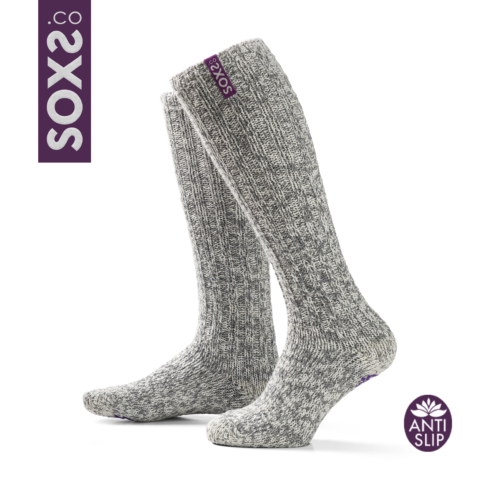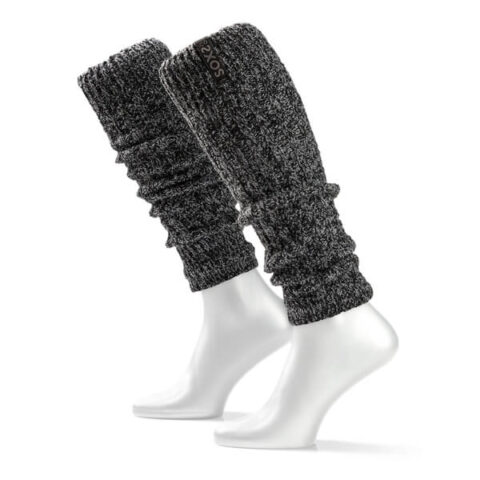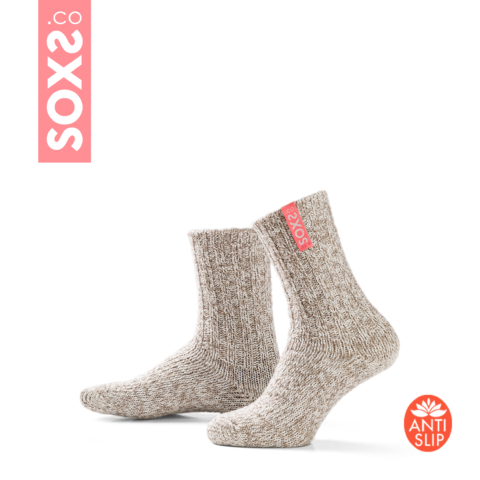Order before 4 p.m. and get same day shipping!
100 % itch free wear comfort!
Warning: SOXS are addicting!
Small additions can make a significant difference in your yoga practice. Specialized yoga socks provide extra grip, comfort, and stability that help you focus on your poses instead of your footing. These practical accessories offer safety, warmth, and stability during your sessions, whether you’re an experienced yogi or just beginning your journey.
Yoga socks are designed with anti-slip features on the bottom that keep your feet firmly planted on your mat. Unlike regular socks, they provide the stability needed for challenging poses, especially on slippery surfaces or in cooler environments where bare feet might feel uncomfortable.
The main advantage of yoga socks is improved stability and balance. They create a protective layer that prevents slips during pose transitions, allowing you to concentrate on proper form and breathing techniques rather than worrying about losing your footing.
The grip technology in yoga socks works by increasing friction between your feet and the mat. Silicone or rubber dots strategically placed on the soles create a non-slip surface that provides stability when you need it most. For optimal support, look for socks with grip patterns that cover both the heel and ball of your foot.
Material choice significantly affects your comfort during practice. Wool stands out for its natural temperature regulation and moisture-wicking properties. Our wool socks keep your feet warm without making them sweat, making them ideal for maintaining comfortable, dry feet throughout your session.
For practitioners who value sustainability, our eco-friendly wool socks offer the perfect combination of comfort and environmental responsibility. We consciously choose mulesing-free wool that respects both animals and people. This natural material provides excellent breathability while aligning with environmentally friendly values.
Wool is comfortable, breathable, and surprisingly sustainable. It naturally regulates temperature, keeping feet warm in cool studios and comfortable during more active sessions. The material performs exceptionally well in managing moisture, preventing the slippery feeling that can disrupt your practice.
Wool yoga socks adapt well to various yoga disciplines. During more active practices like Vinyasa, they provide grip while wicking away moisture. In gentler forms like Yin Yoga, they offer warmth that enhances relaxation and comfort during longer-held poses.
For effective use, choose socks that fit snugly without restricting toe movement. This balance allows you to maintain natural foot positioning while benefiting from additional traction. After a challenging session, your feet stay comfortable thanks to wool’s natural properties.
Finding the right fit is essential for a positive experience with yoga socks. They should stay in place throughout your practice without bunching or slipping off. Our socks are designed to provide consistent support during your entire session.
To maintain the quality and effectiveness of your wool yoga socks, gentle care is recommended. Wash them inside out on a gentle cycle and avoid high heat when drying. This proper maintenance ensures your sustainable wool socks will continue providing grip and comfort for many practices to come.
While barefoot yoga offers direct contact with your mat, wool yoga socks provide additional benefits worth considering. They create a hygienic barrier in shared studio spaces and offer extra warmth during cooler seasons or in air-conditioned environments.
Yoga socks are particularly valuable for practitioners who experience cold feet or who need additional grip support. The natural properties of wool enhance comfort without sacrificing the connection to your practice. At SOXS, we believe in comfort made with conscious choices that support your wellbeing.
Quality yoga socks contribute to injury prevention by creating a stable foundation for your practice. The grip they provide reduces the risk of slips during transitions between poses, while the cushioning effect of wool helps protect your feet from hard surfaces.
Our wool socks offer gentle support that helps reduce impact on joints during standing poses. By choosing well-made, sustainable wool socks for your practice, you’re making a thoughtful choice that benefits both your yoga experience and the planet.
Which yoga session in your weekly routine would benefit most from the added comfort of wool socks? Discover our collection of sustainable wool socks at soxs.co.

Knee height

Knee height

Calf height